More on Fed rate hikes and the potential for US recession in 2016
Editor’s note: The data in the first time series depicted here is cut off in 2015, changing the tenor of the analysis. Please see the correction following this piece, that has a more negative cast regarding the US.
The U.S. economy may be decelerating right now but it is not clear to me that it is headed for recession in the near term. Instead, I believe we are late in the credit and business cycle with tail risks in the United States elevated due to policy divergence. Risk assets will continue to be volatile until the real economy reaffirms a 2%ish real GDP trend or succumbs to recession – at which point, risk assets would fall much further.
Now in December, I wrote about my uneasiness about where we are in the economic and credit cycle and the accuracy of the Fed’s forward guidance. My non-crisis worst case scenario said global policy divergence, slowing earnings growth and poor capex numbers could combine to bring on recession to the US in 2016. I see this as a tail risk even outside of a Chinese-induced crisis. But, despite the increased downside risk, as I made clear on Tuesday, I also think the prevailing view that Goldilocks has been snuffed out by the bears is wrong; there are upside scenarios still in play. So today, I want to focus on some of the data supporting continued expansion, particularly jobs.
First of all, I want to point out that I got the October jobs report wrong because I was too cautious. Normally, you won’t see analysts trying to point out where they went wrong but here I think it is instructive when thinking about where we are in this cycle. The September report was weak and I wrote a post on the faltering US economy and emerging market contagion, dissecting it – and correctly pointing to a slowing real economy. But when the bullish October report came, despite warning of the potential for multiple rate hikes due to its strength, I called the October numbers a “one-off”. My thinking was that the real economy weakness would be reflected in the jobs data. It has not been. Instead November and December were good, with December showing upward revisions to October and November as well.
So what is this telling us? I believe the data are telling us we are not in recession. My view is that jobs are not lagging data. We can use employment data as coincident or anticipatory indicators, depending on whether we measure stock, flow or the flow in flow. Sure, stock measures are lagging. But flow or flow of flow are coincident or leading indicators. Here’s an example: take a look at the 12-month change in non-farm payrolls both in absolute number and as a percentage.
In both cases, the series turns down before recession nearly every time, for data back to 1940. The ONLY exception is perhaps the post-Korean War recession that was due to demobilization and there the downturn in the series was a coincident indicator instead of a leading indicator.So the percentage change in non-farm payrolls, the flow of the flow turns down BEFORE recession hits.
In the latest economic cycle, there is no downdraft apparent yet.
Therefore, unless the jobs data turn down fairly aggressively, I am loath to call an impending recession in the US. I believe the US economy remains on track for middling growth in 2016. And that means policy divergence will continue.
As an aside here, let me say that my very first post at Credit Writedowns was one declaring we were already in recession in March 2008. I employed the same logic in 2008 I am using here to predict recession using jobless claims data. With jobless claims, the data are less anticipatory and can sometimes lag slightly based on past business cycles. But right now, claims are definitely nudging in the wrong direction.
I think Tim Duy comes to a similar conclusion to me when he looks at the data when he writes:
Historically, when the Fed begins a tightening cycle, the clock is ticking for the expansion. By that time, the economy is typically in a late-mid to late-stage expansion, and you are looking at two to three years before the cycle turns, four at the outside.
That sums it up pretty well. We are late cycle and the next recession is closer than the last. But I don’t believe we are in a recession now. However, if the Fed continues to give hawkish forward guidance as it continues on the 100 basis points per year path that it has set out, recession will come sooner than later – with all the tail risk that entails for risk assets.
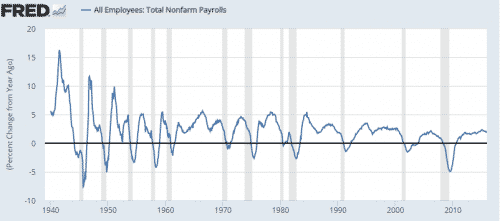
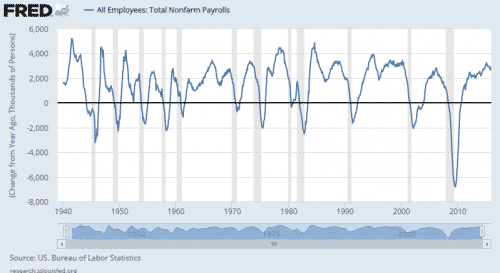
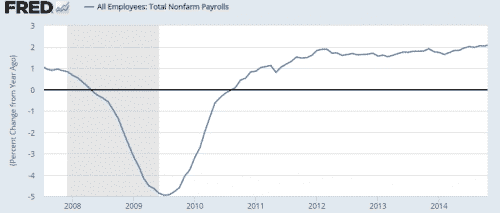
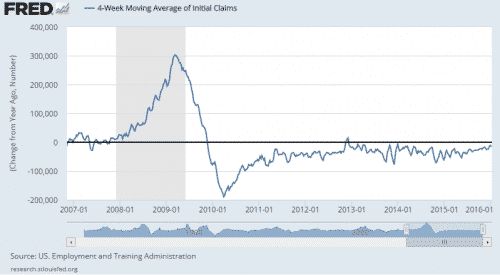
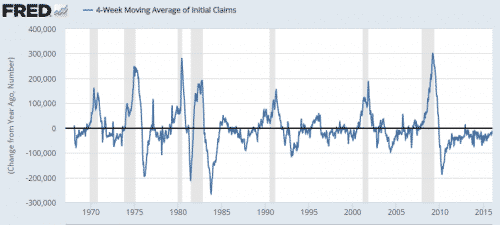
Comments are closed.